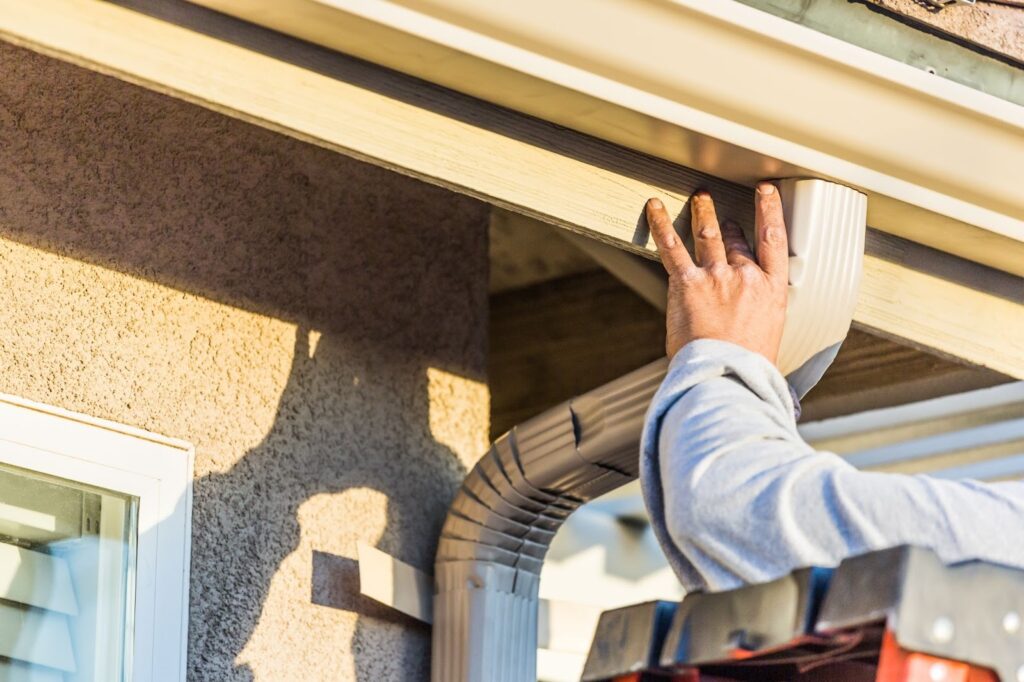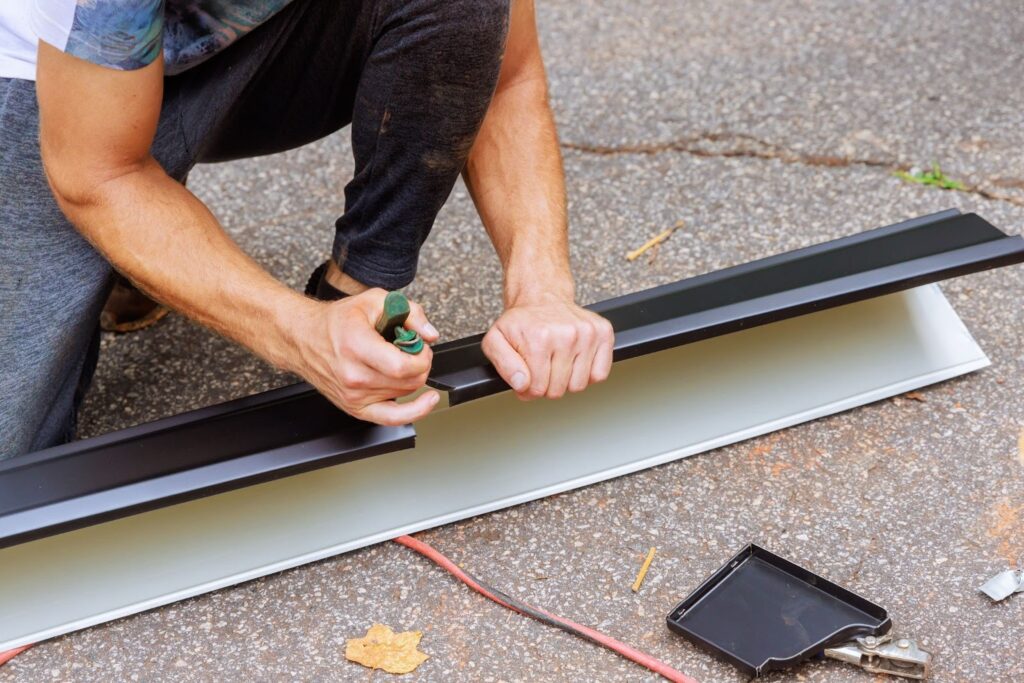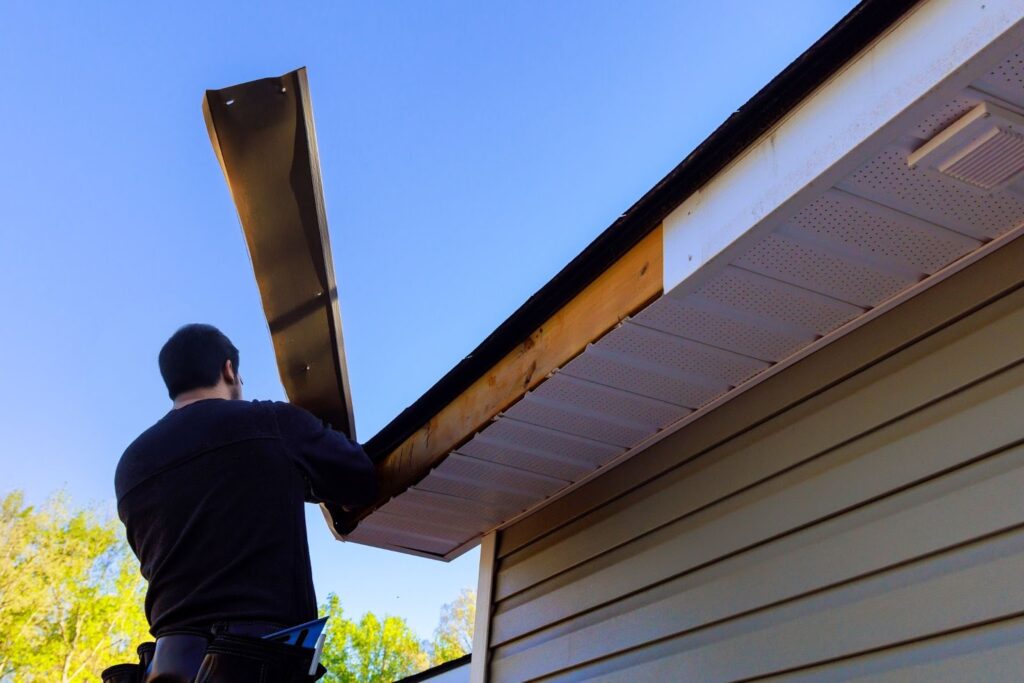
Homeowners often treat gutter repairs as a one-time fix, but the real challenge begins afterward. Once the repair is done, gutters still face the same rain, debris, and weather that damaged them before. Without follow-up care, even the best repair can fail sooner than expected. Keeping your gutter system strong requires attention, consistent upkeep, and smart decisions that prevent recurring damage. Caring for repaired gutters protects residential and commercial properties from hidden structural issues.
Understanding the Purpose of Gutter Repair
Gutter repair restores proper water flow and prevents damage to roofs, walls, and foundations. When gutters are neglected, even small cracks or clogs can lead to major structural problems. Repairs, fixing leaks, realigning slopes, and securing joints are necessary to handle heavy rain. Knowing what your repair addressed helps you plan how to keep gutters working well afterward.
Why Gutters Fail in the First Place
Gutters fail mainly because of clogging, poor maintenance, or worn-out parts. When debris builds up, water pools and corrodes metal seams, weakening the system. Loose fasteners or poor installation can make gutters sag or detach from fascia boards. Weather changes also cause expansion and contraction that break sealants over time. Regular cleaning and early inspections reduce the chances of another failure after a repair.
What Proper Gutter Repair Really Fixes
A proper repair goes beyond sealing visible cracks. It restores the gutter’s structure, improves slope, and strengthens attachment points. Professionals also reseal joints to stop slow leaks that can damage siding or foundations. When a gutter is repaired correctly, water drains smoothly, reducing stress on the roofline. Hiring qualified gutter contractors ensures the fix lasts longer and prevents repeat service calls.
Regular Maintenance After Gutter Repair
Post-repair maintenance protects the money and effort invested in the repair. Gutters collect leaves, dirt, and roof debris daily, which can undo the work if not addressed. Regular inspections keep minor issues from becoming expensive problems. A planned maintenance schedule keeps gutters clean, sturdy, and dependable throughout the seasons.
Set a Seasonal Cleaning Routine
A consistent cleaning routine is key to long-lasting gutter performance. After repair, clean gutters every few months, especially during fall and spring. Removing debris prevents clogs and water overflow that can reopen sealed joints. Use gloves, a small scoop, and a garden hose to flush out remaining dirt. If your home or business has tall gutters, call a professional to clean them safely and thoroughly.
Inspect Gutters After Every Heavy Rain
Storms can test a repaired gutter’s strength. After each rainfall, walk around your property to spot leaks or water pooling near the foundation. Check for drips under joints, uneven flow from downspouts, or sagging sections. Early attention prevents water from seeping into fascia boards or walls. Keep a checklist and note any changes after each storm to track performance over time.
Maintain a Simple Gutter Maintenance Schedule
Creating a written maintenance plan keeps property care organized. Assign specific months for cleaning, inspection, and minor touch-ups. Set reminders or link gutter tasks with other seasonal maintenance. A schedule helps homeowners and building managers avoid forgotten repairs. Consistent care extends the life of every gutter system, especially after professional service.
Preventing Structural Stress on Repaired Gutters
Gutters face constant physical strain from water weight, wind, and roof debris. Even a small buildup adds pressure that weakens joints and mounting brackets. Controlling that stress keeps gutters attached and leak-free for years. Reinforcement and inspection are the most effective ways to preserve the repair’s strength.

Watch for Sagging and Loose Fasteners
When gutters sag, water collects and causes premature wear. Loose brackets should be tightened immediately to prevent sections from detaching. Replace corroded screws or nails with rust-resistant materials to hold the system firmly. During inspections, look for bending or pulling away from fascia boards. Fixing minor alignment problems early helps avoid gutter collapse or water damage.
Manage Roof and Downspout Flow
Downspouts direct water safely away from your building’s foundation. Water can erode soil and damage structures if they’re too short or poorly angled. Install extensions or splash blocks to guide runoff several feet from the property. Keep roof valleys clear to prevent overflow onto repaired gutters. Balanced water flow keeps stress even across the system, improving durability.
Protecting Gutters from Environmental Damage
Natural elements can shorten the life of even a well-repaired gutter system. Tree branches, snow, and heat can all affect its performance. Preventing damage from these sources maintains the gutter’s appearance and strength. Addressing environmental factors saves time, money, and frustration in the long run.
Trim Overhanging Trees Regularly
Branches that hang over roofs drop leaves, twigs, and sap into gutters. Over time, this buildup blocks water flow and traps moisture. Shade from overgrown trees can also encourage mold and rust to form. Trimming trees every few months keeps gutters clear and dry. It’s safer to hire professionals if branches extend near power lines or rooftops.
Guard Against Ice and Snow Damage
In cold climates, freezing water inside gutters expands and cracks seams. Icicles and ice dams also pull gutters away from their mounts. Installing heating cables prevents freezing and reduces extra weight. After a snowstorm, use a plastic shovel to clear the buildup gently. Avoid using metal tools that could scratch or damage the repaired surface.
Prevent UV and Heat-Related Wear
Sun exposure weakens plastic and painted metal gutters. Over time, UV rays cause fading, brittleness, and leaks at joints. Applying a UV-resistant coating adds an extra layer of protection. For homes in hot climates, light-colored gutters better reflect sunlight. Regularly checking paint or coating quality helps maintain both function and appearance.
Long-Term Gutter Protection Solutions
Preventing future issues means investing in long-lasting materials and smart upgrades. Once your repair holds steady, you can enhance the system for easier maintenance. These minor improvements save both time and money in the future. With modern options available, homeowners can make their gutter systems nearly self-sustaining.

Install Gutter Guards or Screens
Gutter guards reduce clogging by keeping out leaves and debris. Mesh screens, foam inserts, or reverse-curve covers each offer unique benefits. Guards allow rainwater to flow freely while blocking waste buildup. Cleaning frequency drops, and the system stays efficient for longer. Choose guard materials that match your gutter type and roof design for the best performance.
Upgrade to Better Gutter Materials
Standard gutters often use thin aluminum that bends easily. Switching to copper, steel, or thicker aluminum provides more substantial resistance to weather. These materials last longer and need fewer repairs over the years. Though they cost more upfront, their durability saves money in the long term. Heavy-duty steel gutters are especially effective for commercial buildings against significant roof runoff.
Improve Water Diversion Around Your Property
Proper drainage is essential for keeping repaired gutters functional. Extend downspouts at least three to four feet from your building. Install drainage pipes underground if space allows to redirect water away completely. Check soil grading so rain naturally flows away from the foundation. These adjustments prevent basement leaks and protect landscaping from erosion.
Professional Gutter Repair Follow-Up
Professional maintenance reinforces the work already done and identifies potential weaknesses early. Gutter systems require skilled inspection to maintain full performance. Having the same expert handle follow-ups saves time and guarantees consistency. Partnering with reliable contractors builds long-term protection for your property.
Schedule Annual Inspections With Experts
Inspections once a year detect wear that’s invisible to most homeowners. Professionals check alignment, sealants, brackets, and slope angles thoroughly. They also clear out hidden debris that regular cleaning misses. Keeping a yearly record of inspections helps track gutter condition over time. A trusted contractor will also suggest upgrades before problems grow worse.
Build a Relationship With a Trusted Contractor
Working with the same repair service builds understanding of your property’s needs. Contractors familiar with your gutter layout make quicker, more accurate repairs. Consistency also helps maintain warranty coverage and proper documentation. Ask about service plans that include cleaning, repair, and inspection together. Strong professional partnerships create a smooth process and dependable gutter performance year-round.
Keep a Maintenance Record for Accountability
Documenting every cleaning, inspection, and repair creates a helpful reference. If damage appears, you can trace its cause and address it faster. Records also make it easier to claim warranties or insurance coverage. Digital tracking tools or apps simplify recordkeeping for both homeowners and managers. Organized maintenance data proves valuable during property assessments or sales.
Stay Ahead With Lasting Gutter Repair Results
Gutters that stay reliable aren’t the ones repaired once; they’re the ones maintained with purpose. Every inspection, cleaning, and minor fix adds to a system that protects your home every season. Treat your recent repair as the start of more competent property care, not the finish line. Trust professionals who know your system, and commit to keeping your gutters strong long after the last drop of rain.
Read the Faircloth Roofing, Inc. blog for professional tips backed by real roofing experience to keep your gutters strong and your property worry-free.






